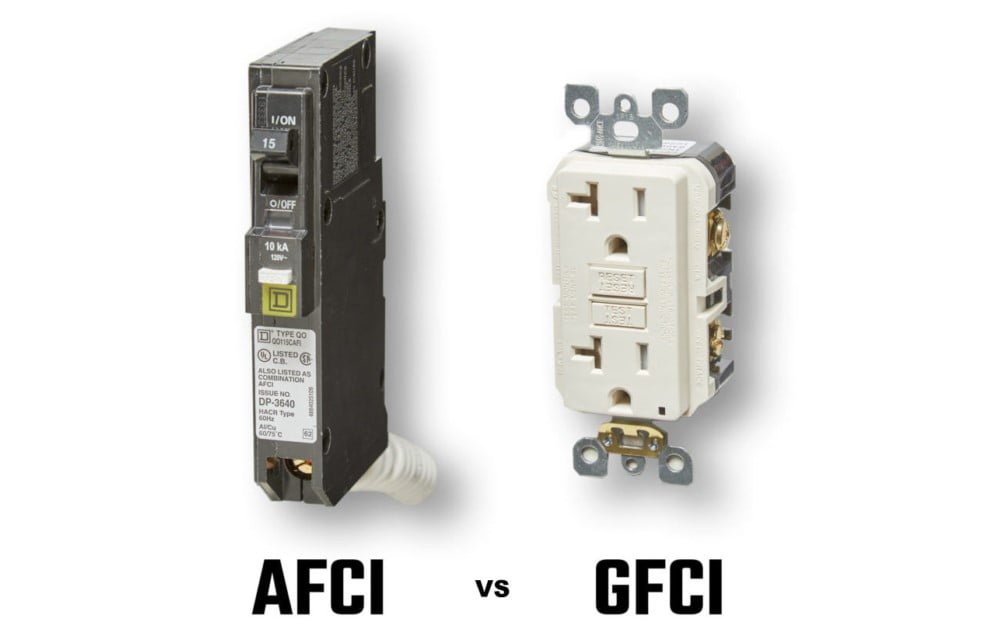Safety is paramount when it comes to the electrical systems of our homes. As our understanding of potential hazards has grown, so have technological innovations designed to protect us. Two of these innovations, AFCI (Arc-Fault Circuit Interrupter) and GFCI (Ground-Fault Circuit Interrupter), are now fundamental components in modern homes. But what if you live in an older home? Do you need them? Let’s dive in.
What is AFCI?
An AFCI (Arc-Fault Circuit Interrupter) is a type of breaker that detects potentially dangerous electrical arcs in the circuits it protects. These unintended arcs can be caused by worn or damaged wires and can lead to electrical fires.
When the AFCI identifies such an arc, it immediately interrupts the circuit, significantly reducing the risk of fire. Arc-faults can arise from various scenarios, like a nail driven into a wall puncturing a wire, damaged or aged cords, or even wiring chewed by pests.
What is GFCI?
A GFCI (Ground-Fault Circuit Interrupter) is designed to protect against electrical shocks that might occur if a person comes into contact with an electrified path that is not intended to carry current, such as a faulty appliance or frayed wire coming into contact with a wet floor.
GFCIs compare the amount of current going to and returning from equipment along the circuit. If there’s an imbalance (indicating a potential ground fault), the GFCI will trip within a fraction of a second, cutting off the electricity and preventing injury.
AFCI vs. GFCI
While both AFCI and GFCI enhance electrical safety, they serve different functions:
- AFCI protects against fires caused by electrical arcs
- GFCI safeguards against electrical shocks
Do I Need Them in My Old Home?
Absolutely, and here’s why:
Safety First:
While older homes have their charm, their electrical systems were designed and installed according to the standards of their time. As we’ve become more knowledgeable about electrical safety, it’s only logical to upgrade these systems to meet modern standards.
Prevention is Better:
Waiting for a problem to occur can have tragic consequences. By proactively installing AFCI and GFCI devices, you’re taking steps to prevent potential hazards.
Modern Appliances:
Older homes weren’t designed with today’s plethora of electronics and appliances in mind. Modern devices can pose risks when plugged into older systems that lack the protective features of AFCI and GFCI.
Home Insurance:
Some insurance companies may offer reduced premiums if you’ve upgraded your home’s electrical safety. Even if they don’t, the peace of mind knowing you’ve enhanced your home’s safety is priceless.
National Electrical Code (NEC) Requirements:
In the United States, the NEC has progressively expanded the requirements for AFCI and GFCI protection over the years. While older homes are often ‘grandfathered’ in and not required to retrofit, if you undergo significant renovations, you might be required to upgrade.
Conclusion
Regardless of the age of your home, prioritizing electrical safety is crucial. By integrating modern safety devices like AFCI and GFCI into older homes, you not only enhance the protection of the property but also ensure the well-being of its inhabitants. If you’re considering these upgrades, NSW Electrical can help you analyze and help you implement safety features using AFCI and GFCI

